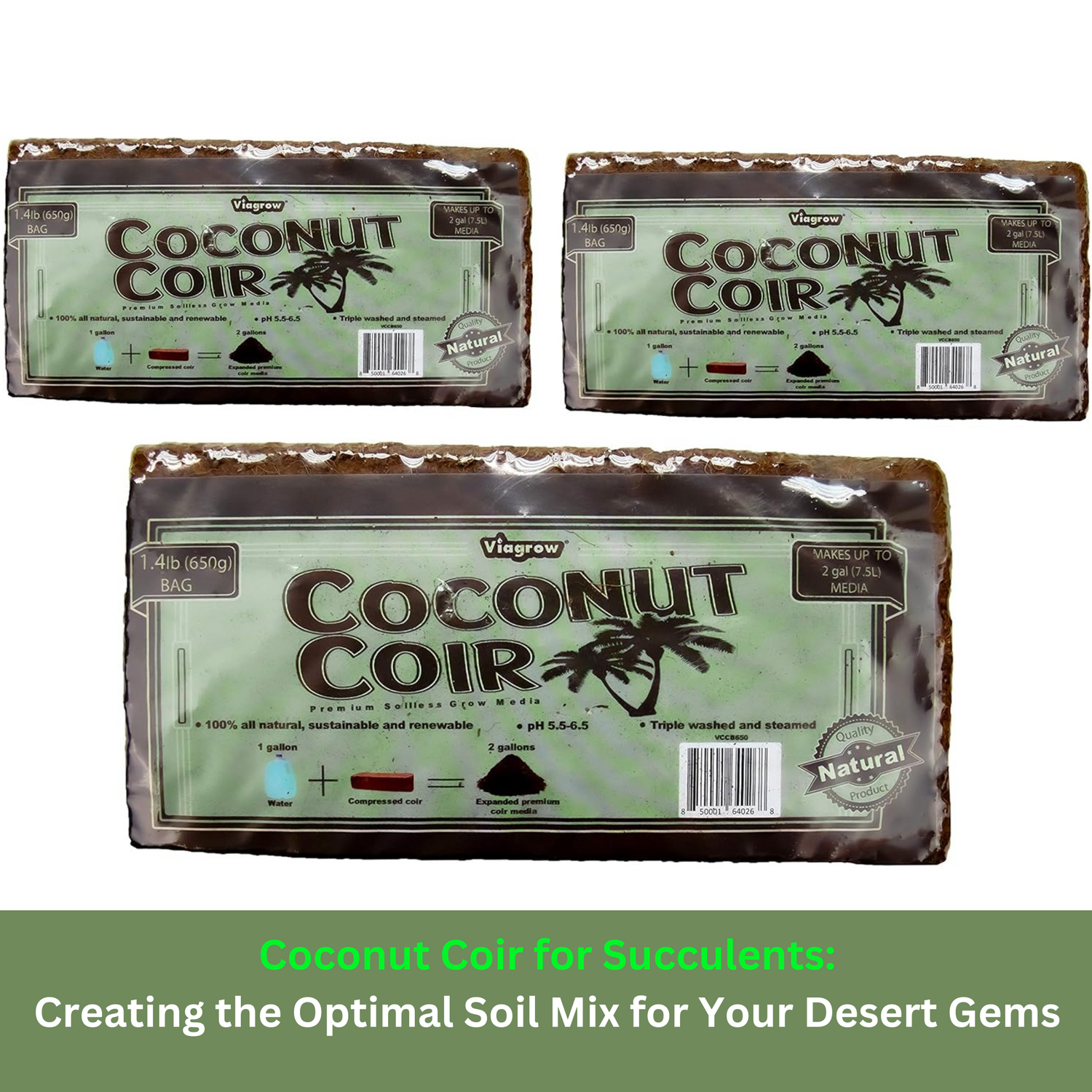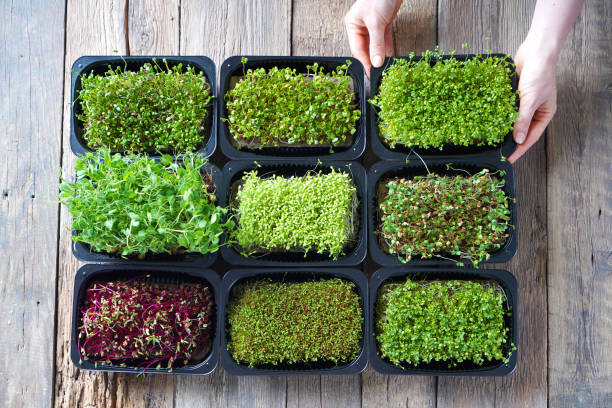Succulents have captured the hearts of plant enthusiasts worldwide with their striking forms, vibrant colors, and low-maintenance nature. These water-storing plants, native to arid environments, have become popular choices for both indoor and outdoor gardening. However, the key to thriving succulents lies in providing them with the right growing conditions, particularly when it comes to their soil mix. Enter coconut coir, a versatile and sustainable substrate that's gaining recognition as an excellent component in succulent soil mixes. This natural fiber, derived from coconut husks, offers a unique set of properties that can significantly benefit these desert-adapted plants when used correctly.

Benefits of Using Coconut Coir for Succulents
Coconut coir brings several advantages to succulent soil mixes, addressing the specific needs of these drought-tolerant plants. One of its most significant benefits is its ability to balance water retention and drainage. While succulents are adapted to store water in their leaves and stems, their roots are susceptible to rot if left in standing water. Coconut coir's unique structure allows it to hold moisture when the soil is dry, yet drains excess water quickly, preventing the waterlogged conditions that can be detrimental to succulent health.
The aeration properties of coconut coir are another crucial benefit for succulents. Its loose, fibrous texture creates air pockets in the soil mix, ensuring that succulent roots have access to oxygen. This improved aeration promotes healthier root development and helps prevent issues like root rot, which can be particularly problematic for succulents.
From an environmental standpoint, coconut coir stands out as a sustainable choice for gardeners. As a byproduct of the coconut industry, coir utilizes a resource that would otherwise be discarded. Its production has a lower environmental impact compared to peat moss, a common component in potting mixes that's harvested from sensitive bog ecosystems. By incorporating coconut coir into your succulent soil mix, you're not only providing an optimal growing medium for your plants but also making an eco-friendly choice.
Creating the Perfect Soil Mix
The ideal soil mix for succulents should provide excellent drainage while retaining just enough moisture to support plant growth. Here's a recipe for an optimal succulent soil mix using coconut coir:
Components:
- 40% coconut coir
- 40% coarse sand or fine gravel
- 20% perlite or pumice
Additional optional components:
- Small amount of worm castings or well-aged compost for nutrients
- Crushed granite or chicken grit for improved drainage
To create your mix:
- Start with pre-moistened coconut coir. If using compressed bricks, rehydrate according to package instructions and allow excess water to drain.
- In a large container, combine the coconut coir with the sand or gravel and perlite or pumice.
- Mix thoroughly, breaking up any clumps to ensure an even distribution of components.
- If using, add a small amount of worm castings or compost and mix again.
- Test the mix by squeezing a handful. It should hold together briefly when compressed but crumble easily when released.
How to Plant Succulents in Coconut Coir Mix
Once you've prepared your coconut coir-based succulent mix, follow these steps to plant your succulents:
- Choose a pot with drainage holes. For added drainage, cover the holes with mesh or a small piece of screen to prevent soil from washing out.
- Fill the pot about 1/3 full with your prepared soil mix.
- Remove the succulent from its current pot, gently shaking off excess soil from the roots.
- Place the succulent in the new pot, centering it and adjusting the soil level as needed.
- Fill in around the plant with more soil mix, gently tamping down to remove air pockets.
- Leave about 1/2 inch of space between the soil surface and the pot rim for watering.
- Wait a few days before watering to allow any damaged roots to heal.
To help succulents acclimate to their new mix, place them in a location with bright, indirect light and hold off on fertilizing for the first month.
Care Tips for Succulents in Coconut Coir Mix
Proper care is essential for succulents to thrive in their coconut coir-based mix:
Watering:
The improved drainage of the coir mix allows for a more regular watering schedule than traditional succulent soils. However, it's still important not to overwater. Water thoroughly when the soil is completely dry, allowing excess water to drain freely. Frequency will depend on climate and season, but typically ranges from once a week to once every two weeks.
Light:
Most succulents prefer bright, indirect light. Place them near a south or west-facing window for indoor growth. If growing outdoors, provide protection from intense afternoon sun in hot climates.
Fertilization:
Feed sparingly during the growing season (spring and summer) with a balanced, water-soluble fertilizer diluted to half strength. Avoid fertilizing during the dormant winter months.
Maintenance:
Remove any dead leaves promptly to prevent pest and disease issues. Rotate your pots regularly to ensure even growth and sun exposure.
Transform Your Succulent Soil Mix with Coconut Coir
Incorporating coconut coir into your succulent soil mix offers numerous benefits, from improved water management to enhanced root health. This sustainable substrate, when combined with other appropriate components, creates an ideal growing environment for these fascinating desert plants.
We encourage you to experiment with coconut coir in your succulent mixes. Whether you're a seasoned succulent enthusiast or just starting your journey with these captivating plants, the right soil mix can make all the difference in their health and vitality.
For more tips on succulent care, sustainable gardening practices, and innovative cultivation techniques, be sure to explore our blog regularly. Happy planting, and may your succulents thrive in their coconut coir-enriched homes!










Laisser un commentaire
Tous les commentaires sont modérés avant d'être publiés.
Ce site est protégé par hCaptcha, et la Politique de confidentialité et les Conditions de service de hCaptcha s’appliquent.